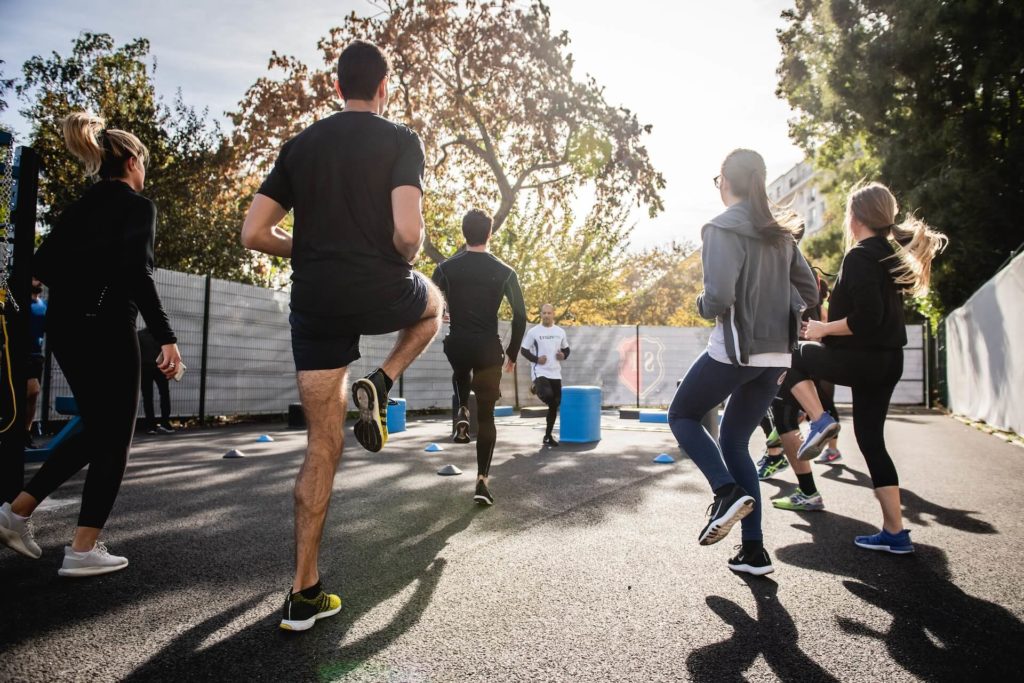Walking is Cardio. How to build a good cardio walking workout
Is walking a cardio workout?
To answer the question “Is walking a cardio exercise?” the answer depends on how fast you walk. It is important to understand what a cardio workout is and how to get the most out of each walk.
Let me explain…
Cardio exercise is any workout that works the cardiovascular system such as the heart. This is how the name came about. Cardio, also known as aerobic exercise, includes a few of the most common exercises such as:
- Swimming
- Jogging or running
- Bicycling
Cardio workouts, by definition, require oxygen. Harvard Medical School says that regular aerobic exercise is essential for maintaining healthy heart function as we age. Aerobic exercise has many benefits, including improved athletic performance, better health and lower risk of developing cardiac complications. Cardio exercises ensure that your heart, circulatory system and lungs are healthy.
The consumption of oxygen is one of the most important differences between anaerobic and aerobic activity. Anaerobic activity such as weightlifting requires the body to work at its maximum capacity with short bursts. These activities can be done for only a brief time. Aerobic activities, on the other hand, last for longer periods of time.
A lot of research has also been done to show the health benefits of regular aerobic exercise. The American Heart Association released evidence and statements proving that aerobic exercise strengthens the heart and improves blood flow throughout the body.
Cardio workouts are a great way to lower blood pressure. It reduces bad cholesterol (LDL), and increases good cholesterol (HDL).
Medical professionals specifically recommend this:
At least 40 minutes of vigorous to moderate aerobic exercise should be done at least three times per semaine.
Aerobic activity can also help regulate insulin levels and lower blood sugar. To perform any physical activity, such as walking, your body needs carbohydrates. Sugar is one of the easiest carbs to burn.
Regular cardio exercise will lower blood sugar and allow your body to regulate insulin. A medical study that included individuals with type 2 diabetes found that participants had lower blood sugar levels and maintained a healthy weight.
These are just a few of many benefits that cardio training can bring. Other benefits include improved sleep habits and a lower risk of chronic pain. A cardio workout is essential. You might be asking yourself if walking is a cardio workout. Yes, it does! You just need to work at a specific speed. Walking down the hall casually is not cardio. However, a fast walk is cardio.
Walking at least 3 miles an hour is considered cardio exercise because it works your heart and lungs.
Brisk walking is a great way to strengthen your heart and lungs over time. You need to learn the basics of brisk-walking and how it differs from regular walking.
Brisk Walking: Why you should be focusing on it
Medical professionals recommend that you do moderate to vigorous aerobic activity three times per week, for at least forty minutes. Brisk walking is considered moderate intensity exercise. This is different than a normal walk because the “tempo,” or the pace at which you move per minute, is higher. The speed also increases.
How fast you can walk depends on many factors. There are several things you can do to increase your walking speed and get more from your brisk walking sessions.
According to one medical study, a “brisk” walk is defined as a walking speed of about 100 meters per minute. This was only for people under 60 years old. The speed of these people varied depending on how long they walked, but most participants averaged around 3 miles an hour.
You might find walking 3 miles an hour difficult if you are already fit or run regularly. You might consider walking 4 or 4.5 miles an hour. A walk of 3 to 4 miles an hour is equivalent to a 20-minute walk, while a walk at 4 miles per hour equals a 15-minute walk. The CDC considers a 2.5 MPH walk to be moderate-intensity, while a walk of 3.5 or more miles per hour is considered to be “brisk”.











